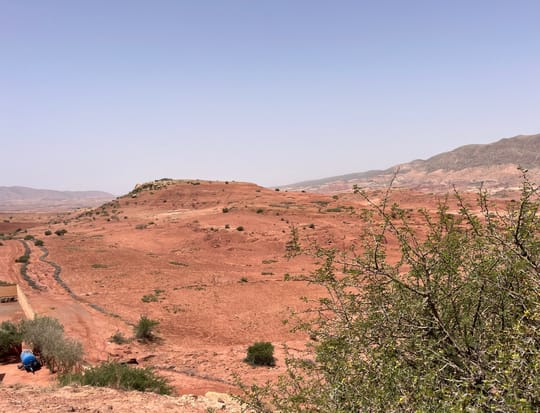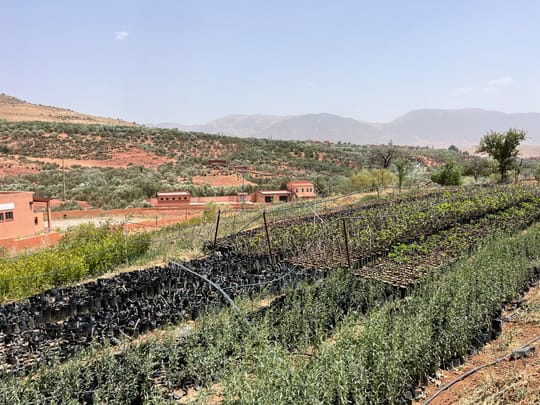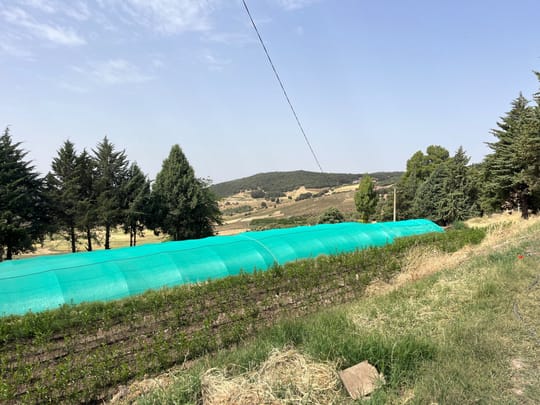Celebrating World Environment Day and Land Restoration in Morocco

Every year since 1973, the United Nations has sponsored World Environment Day in order to draw attention to the contemporary environmental crisis. This year, the UN decided to tackle three expansive concepts as part of the #GenerationRestoration campaign — land restoration, desertification, and drought resilience. All three are issues with which Morocco and its inhabitants are intimately acquainted.
As an intern at the High Atlas Foundation, I spent the last week touring large swaths of Morocco — from Knénifra in the middle Atlas to Azilal in the high Atlas, from Tiznit on the Southern Atlantic Coast to the Sahara on the Eastern border with Algeria. I visited tree nurseries and women’s co-operatives and spent countless hours staring out the window at the rapidly changing landscape. Driving around the country, it is impossible to avoid the exceptionally visible manifestations of Morocco’s six-year drought — lands which were once brimming with agriculture are now empty, dams which once held back tons of water are now depleted, and the price of sheep for the Eid holiday has increased by at least 1,000dh due to a lack of available grazing lands.
And what became clear over the course of these seven days was that local communities which have had their livelihoods fundamentally altered by the drought have already begun to indigenize solutions to the problems framed in the #GenerationRestoration campaign. In this way, and so many others, Morocco uniquely embodies and practices the fundamental aspirations of World Environment Day 2024.
Consider agricultural biodiversity. Over the past decades, much of Morocco’s agricultural land transitioned away from traditional agricultural practices which emphasized subsistence agriculture and biodiversity to cash crop systems which deplete soil nutrients. While regions with sufficient water resources such as the Béni-Mellal-Khénifra vallely are able to subsist off of these cash crops, other agricultural communities are increasingly realizing the unsustainable nature of such agricultural practices.
According to Amina El Hajjami, the program director of HAF tree nurseries, biodiverse agriculture has long been indigenous to Morocco. In keeping with this indigenous knowledge, HAF has placed a substantial emphasis on biodiversity. The Azilal and Khénifra tree nurseries alone carried a plethora of tree varieties — almond, fig, pomegranate, cherry, grape, olive (in multiple varieties), etc. In fact, farmers with whom HAF nurseries supply trees are required to plant multiple species.

What is striking about this insistence on biodiversity is the way in which it holistically works toward land restoration, addressing both the environmental and human effects of land degradation. On the environmental side, biodiversity restores degraded land by providing diverse nutrients to the soil. On the human side, it also mitigates rural poverty by reducing the risk of tree diseases and ensuring income across multiple different harvest seasons. In short, these tree nurseries in Morocco absolutely epitomize a holistic concept of land restoration.
Nevertheless tree nurseries are not always a silver bullet. Both of the tree nurseries in Azilal and Khénifra are carefully tended by two brilliant caretakers who have transformed small plots of land into flourishing spaces for saplings. But the nature of their work, and specifically the investment necessary to begin this work, often exceeds the financial capacity of a local farmer.
First there is the well which must be dug. Then there are the solar panels which power the pump and the drip irrigation systems. The greenhouses, used for olive trees in Azilal and carob trees in Khénifra, are expensive. If the land is hilly, as much of the productive land in the Atlas Mountains is, it must be terraced. And even if financial considerations were to be bracketed, projects still run up against resource constraints — sometimes there is quite literally no water.
In short, the monetary investment necessary to begin the process of sapling growth is far beyond an ordinary farmer and captures the limitations of this strategy for land restoration. The United Nations, in selecting land restoration as its guiding principle for World Environment Day, has acknowledged the intransigence of this issue.

But the United Nations has also implicitly acknowledged our collective and local ability to solve it. If you ask Amina El Hajjami what her vision for the future is, she will explain that she wants to return to school for a degree in environmental work because for her, environmental issues are both expansively global and relentlessly local. Ultimately this is what World Environment Day invites us to do — to remember the interconnectedness of our climate concerns while also insisting that these concerns be localized within specific ecological and agricultural contexts.
It is easy to look at the six-year drought in Morocco and only see the land degradation. And it is easy to miss the expansive indigenous traditions such as biodiversity which must play a significant role in any land restoration project. But World Environment Day is a day when we must look past the current reality and begin to imagine a different future that localizes creative solutions such as tree nurseries.
Naima Sawaya is a student at the University of Virginia and an intern at the High Atlas Foundation in Morocco.